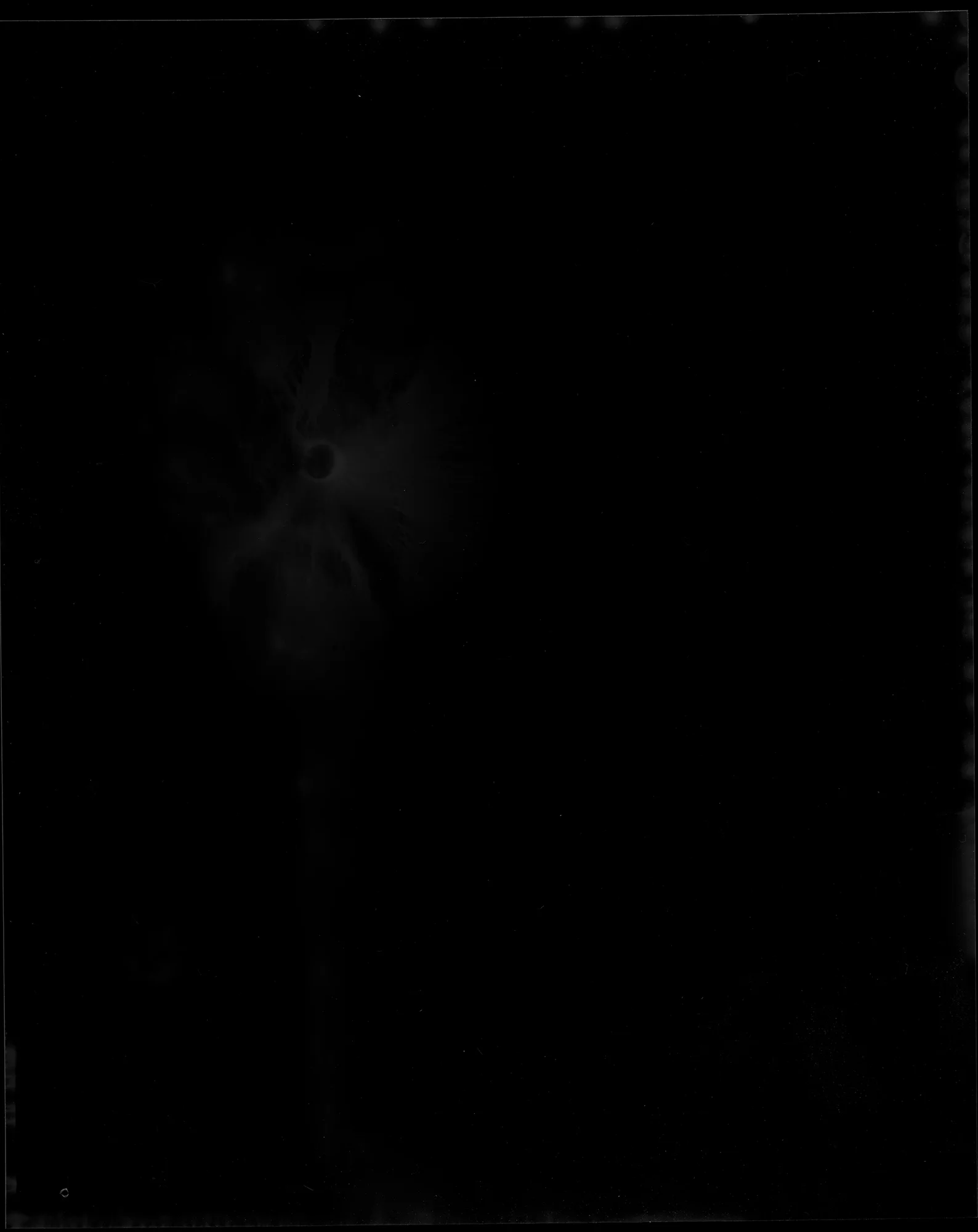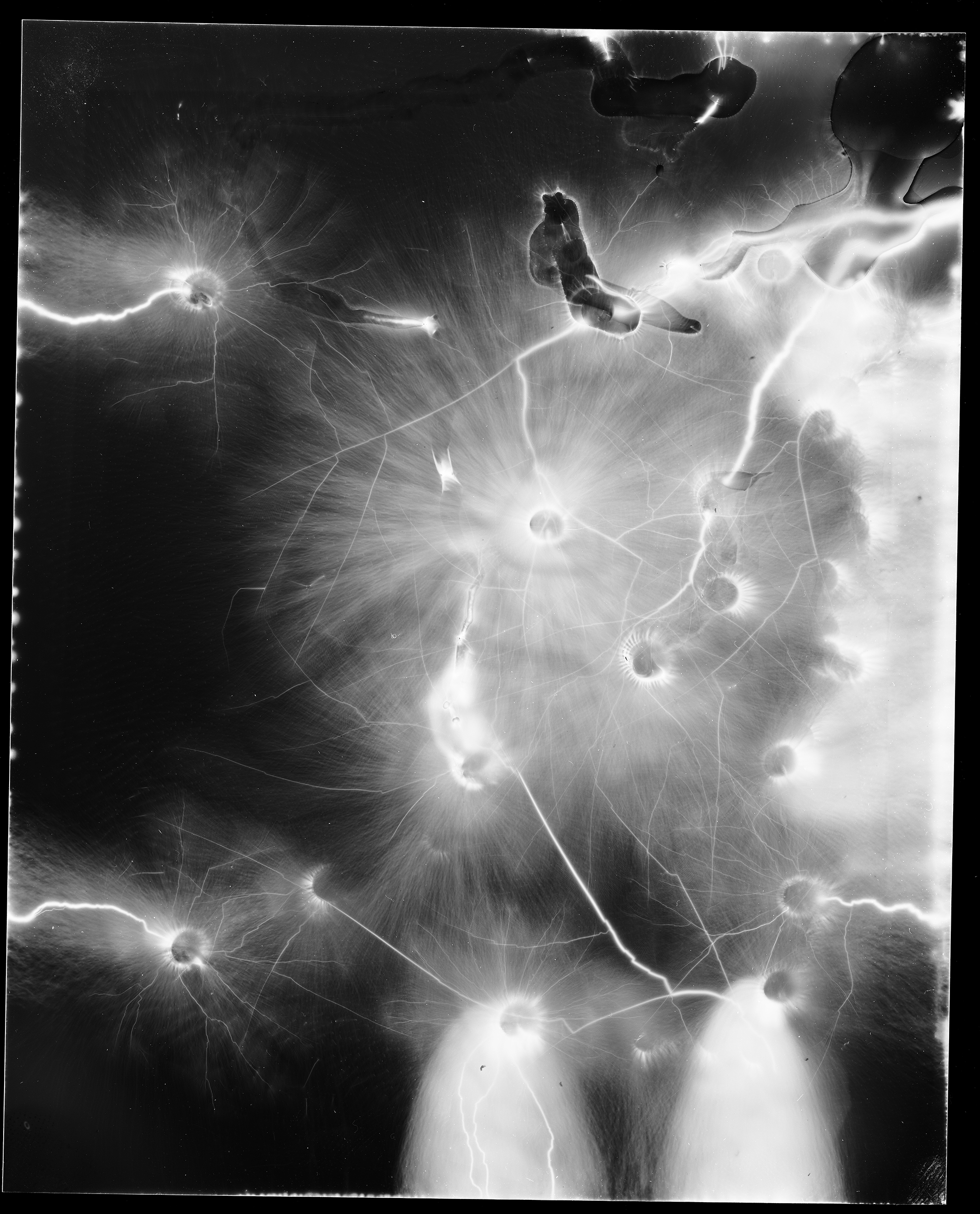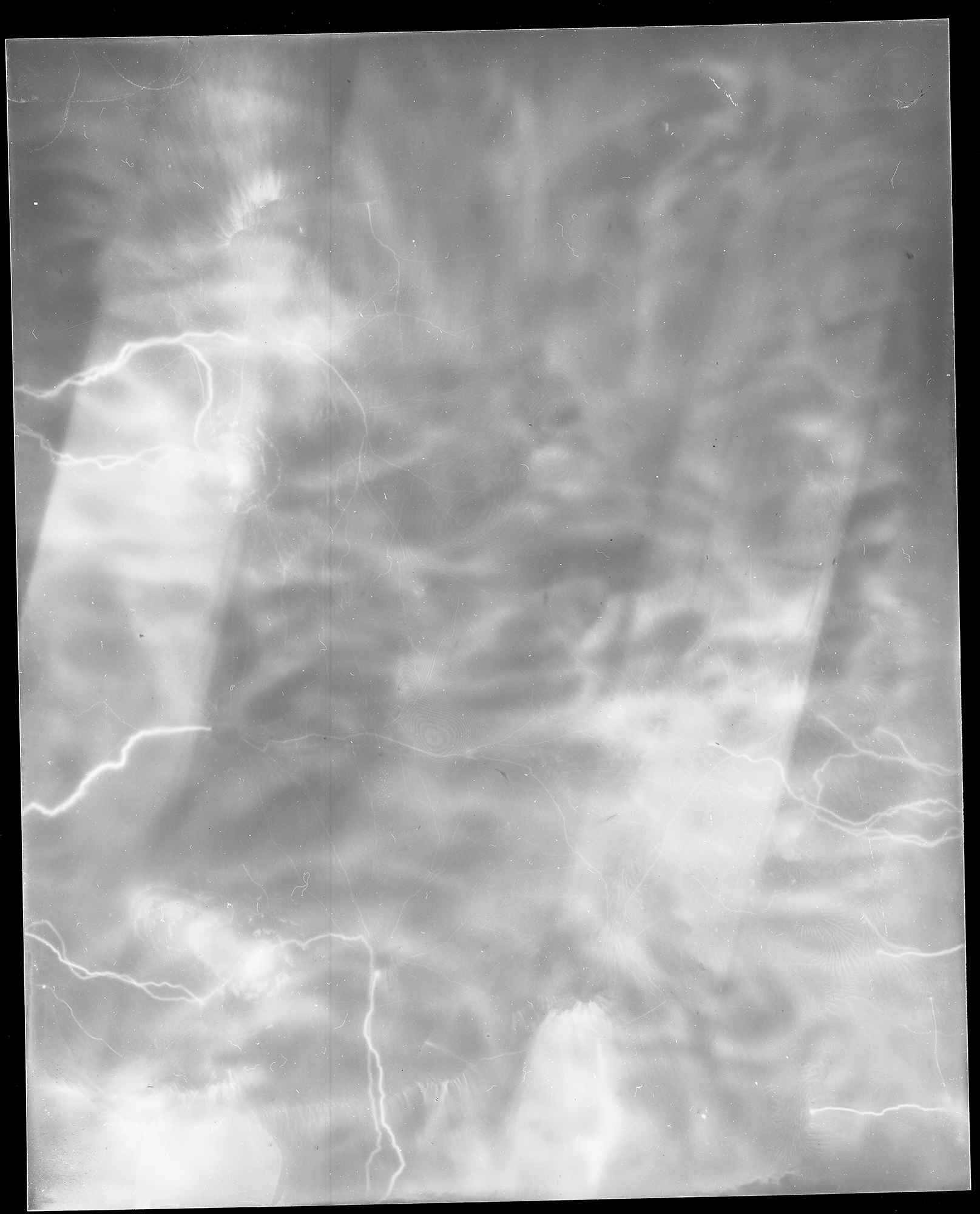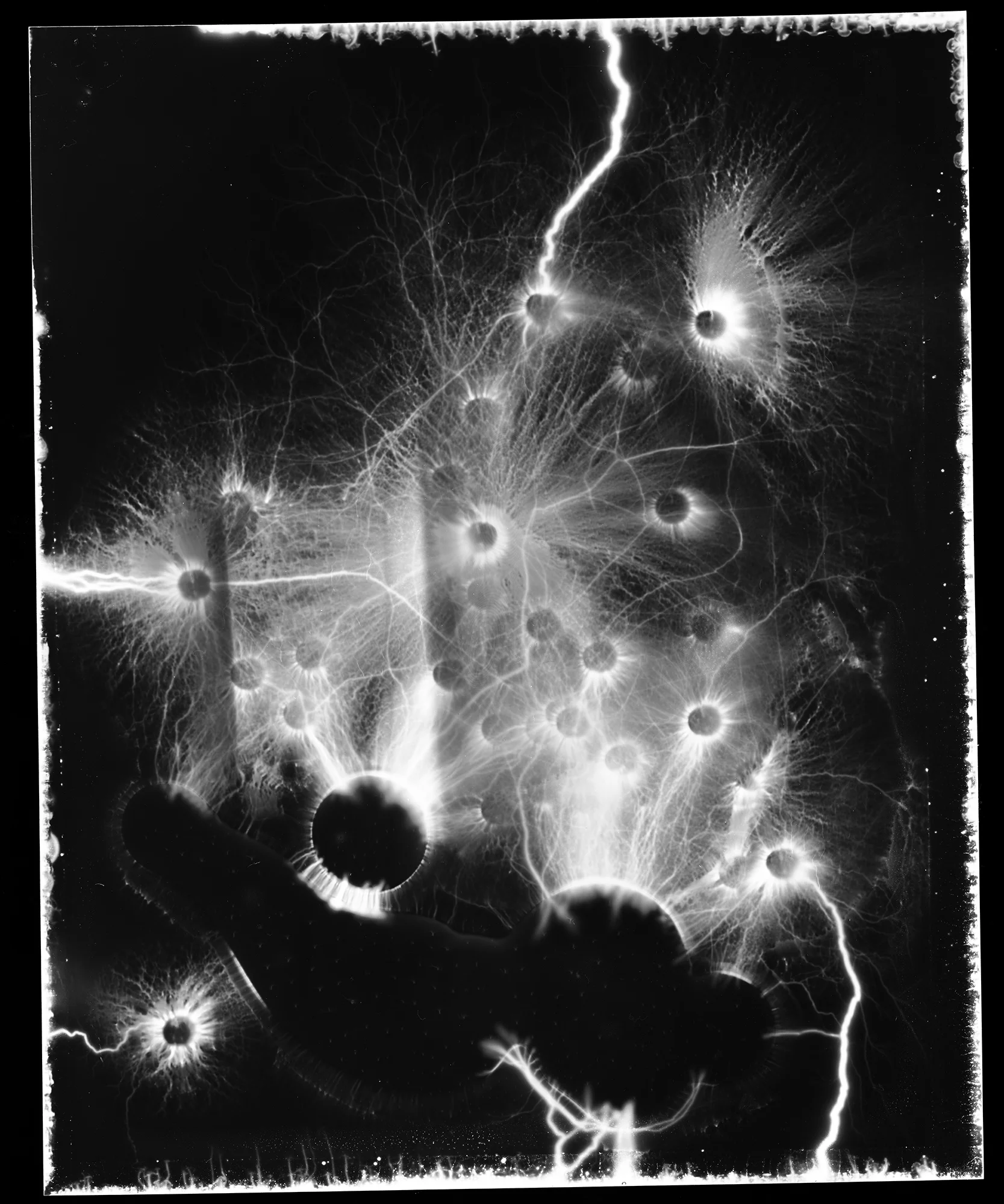While taking Alternative Processes last semester, I became interested with the work of Hermann Schnauss. Schnauss was a German scientist who published a book titled Photographischer Zeitvertreib (Photographic Pastimes) in 1883. In his book, Schnauss explained a number of photographic experiments what he’d performed. In his book, he explained a particular experiment in which he used a “friction generator” to create images on photoreceptive material using nothing but electricity. After looking into his work myself, I reached out to the physics department at K-State and managed to recreate Schnauss’ process (see electrographs under Projects above for examples). Another source of inspiration that I found was the work of Hiroshi Sugimoto’s Lightning Fields. Sugimoto made a series of images using his own process by which he was able to image electricity passing through a photographic medium, creating stunning images. I intend to try to reach out to Sugimoto and ask him what his process was as well as his motivation for creating his images.
For my project in this course I intend to expand upon the work that I made last semester in this manner, ultimately hoping to create a full portfolio. I would say that this genre of work would be in the realm of conceptual photography, as the process requires going out of the normal scope of photography. Throughout the semester, I intend to try a few different methods of presentation, from inkjet prints to small Collodion plate printing. As of now, I am leaning more towards large-scale inkjet prints, as the process by which I’ll make these images will easily scale up in size without information loss in the print.
Challenges that I expect that I’ll encounter throughout the semester largely boil down to finding a specific motivating factor behind the work (the “point” that they should try to get across) and timeframe. I intend to reach out to the physics department again for aid, which creates the problem of having to work around times I can meet with the professors that I’ll be reaching out to, as they have busy schedules. One possible work-around that I think I can try to do to alleviate this is to acquire my own friction generator, which would be fairly simple, but costly. As for finding the motivation behind my work, I intend to try to come up with a more solid concept behind my project, but as of now I want to pursue this project because I enjoy making the images themselves.
My timeline as of now revolves around when I can first get a chance to meet with the physics department. I have already emailed the professor that I worked with before, but as of now I have not scheduled a time to get into the lab to make images. If that fails, my next step is to purchase and receive a generator of my own, which will free me of most time constraints. Another aspect that I need to take into account time-wise is the use of color film, which I would have to send out to get developed, adding at least a few days of time between making images and the editing process. Other than these, I think that my project should be able to progress on schedule with the deadlines posted in the syllabus.
























